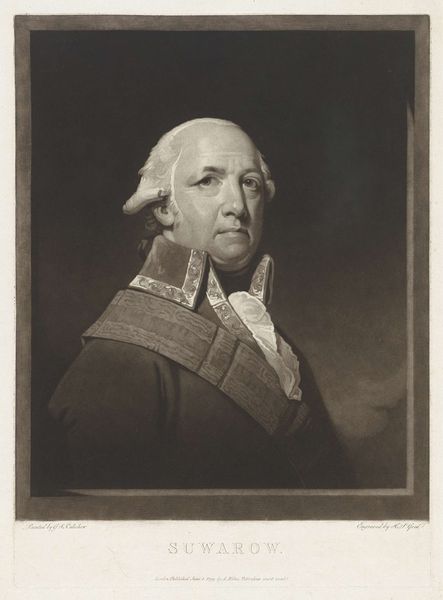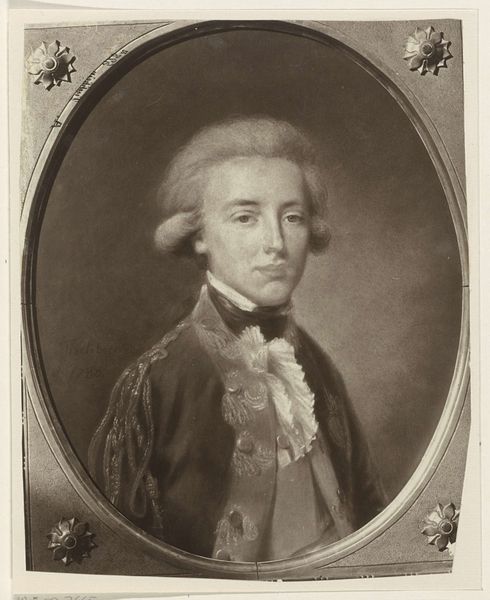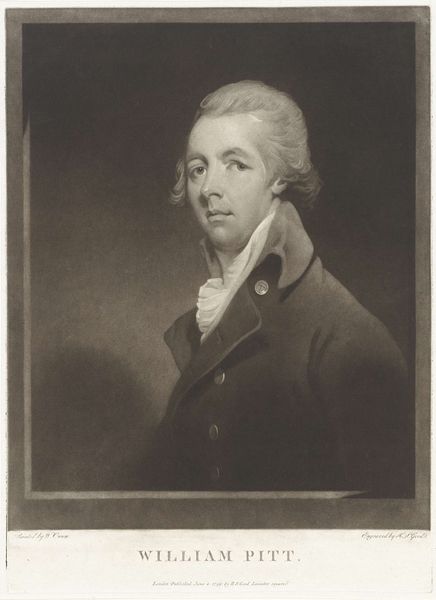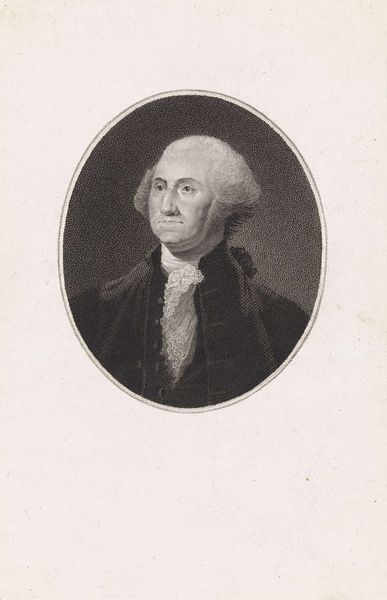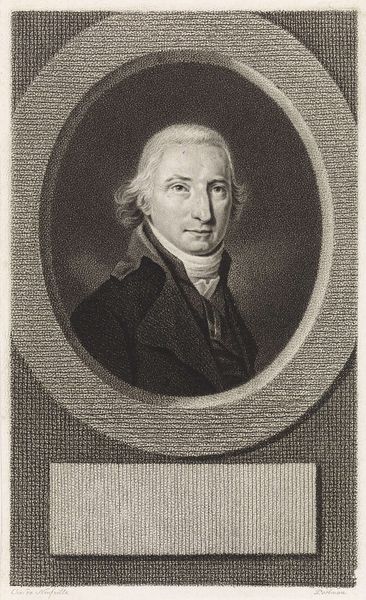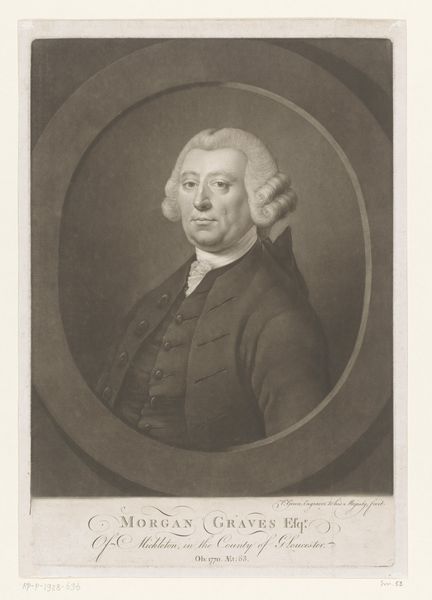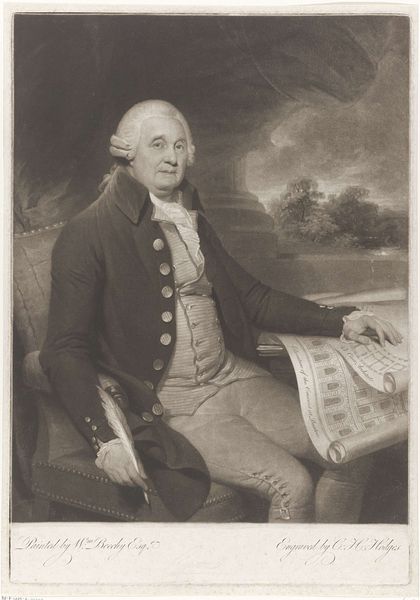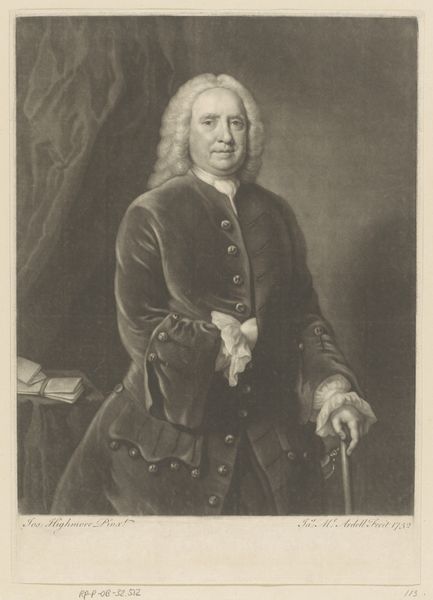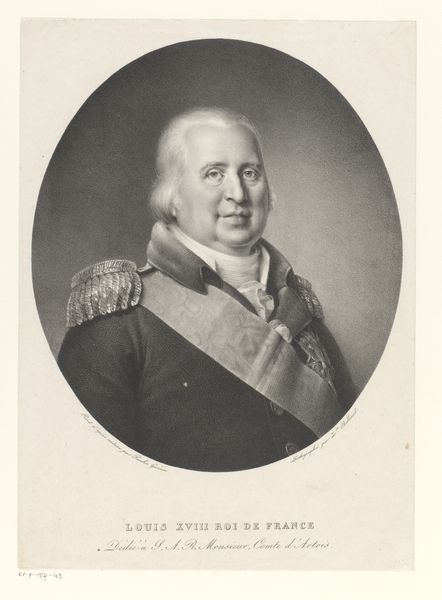
engraving
#
neoclacissism
#
charcoal drawing
#
history-painting
#
engraving
Dimensions: height 422 mm, width 302 mm
Copyright: Rijks Museum: Open Domain
Curator: Allow me to introduce "Portret van admiraal Jan Willem de Winter," a captivating engraving crafted in 1796 by Charles Howard Hodges, currently held in the Rijksmuseum collection. Editor: My initial reaction is drawn to the severe contrast of light and shadow, imbuing the sitter with a palpable weightiness and stoicism—the stark oval format really pushes this feeling, doesn’t it? Curator: It’s impossible to look at de Winter's portrait without acknowledging the political upheaval of the late 18th century. Here’s a figure whose rise occurred in the maelstrom of Dutch politics and military strategy—he would later lead a Patriot faction naval fleet against the British. Editor: That resonates profoundly. The controlled elegance, visible in the ornate frogging, gives way to an immediacy via the man's facial expression and somewhat mussed wig. You get the sense of neoclassicism barely concealing a person right beneath the historical veneer. Curator: And the portrait's deliberate visual vocabulary further deepens this tension. The portrait presents de Winter within specific social and philosophical paradigms, a Dutch admiral at a tumultuous crossroads of European powers and emerging nationalist movements. De Winter becomes the emblem of the Dutch Republic’s military aspirations and the complex politics embedded in the Age of Revolutions. Editor: Interesting...it's the almost monochrome approach and tonal modulations within the etching, the gradations of light around his face, that hold my attention. A somber almost severe character study emerges when seen against such a dramatic chiaroscuro. There's a captivating play between the objective details and a sense of a turbulent psychology underneath. Curator: Yes, but let us not divorce such techniques from their contexts. Hodges here paints de Winter on the precipice of modern Netherlands’ naval restructuring after the Batavian Revolution. Every visual choice serves the purpose of conveying something of that transformational experience through the Admiral. The gaze almost begs you to delve beneath the superficial reading of Dutch victory and heroism to find out more. Editor: Agreed, those contexts add essential layers. The portrait presents a formidable facade, sure, but that's offset with raw intensity from an age where political personas were still evolving with individual narratives. Curator: Understanding how such art is rooted in broader socio-political realities offers vital access into the artwork’s deeper significance. The historical specificity informs his representation of naval strength as a virtue. Editor: Ultimately, seeing how those qualities are etched within his countenance yields an artwork rife with technical achievement and a captivating individual narrative, political unrest notwithstanding. A potent example of neoclassical portraiture and a glimpse into character and revolutionary ideals.
Comments
No comments
Be the first to comment and join the conversation on the ultimate creative platform.

